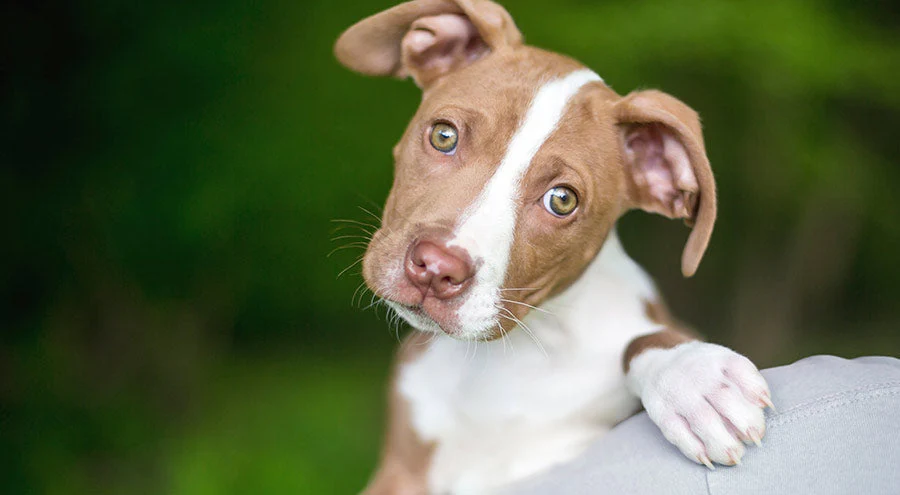Do Dogs Know Their Name? Have you ever thought about whether your dog is truly understanding you in your conversations with them? Many pet owners believe that their pet understands the simple commands like “sit,” “stay,” and “down,” leading us to believe that they are able to associate the words with objects or actions. However, do they recognize their names?
Dogs have been in the human community for longer than other animal species in the world Research suggests that dogs are able to understand humans’ emotions, words and even their own names better than you think.
Do Dogs Understand Our Words?
Based on the American Psychological Association (APA) Dogs can comprehend more than 150 different words and their brain capacity is comparable to an infant of 2 years old. The most intelligent dogs, often known as “super dogs,” can be able to learn as much as 250 phrases.
In terms of knowing their name, studies have proven that dogs acquire names and words in a matter of a week.
Do Dogs Know Their Nicknames?
If you sometimes reduce your dog’s name, or make them sound absurd, you’re not the only one. Does your dog understand what you’re doing to their name?
In a study from 2020 the researchers employed an non-invasive technique to see how dogs react to three different types of language:
Instructive words that users already recognize (e.g., “sit,” “stay,” and “down”)
Words that are not true but have the same sound as those instructions terms (e.g., “sid” instead of “sit”)
Words that don’t make sense and do not sound like words used in instruction
The researchers found that dogs’ brain process speech extremely rapidly when using an untrue word which sounds entirely different from the words you’re instructed to use. When a word that is nonsense is similar to the instruction word they perceive it as an instructions they recognize but are not able to distinguish a distinction not at all.
They also interpret our body language, and pay attention to our tone when we talk to them that helps them comprehend what we’re saying to them. It is evident that they utilize both brains to comprehend human language. Dogs can recognize their own names as well as nicknames.
Signs That a Dog Knows Their Name

If a dog can recognize their own name there are many ways to tell if they are actually aware of their name, or if they have just learnt to recognize the normal tone of your voice when you speak the name of your dog.
One of the most obvious signs that a dog is familiar with their name, which means they know their own name and you’re with the name to talk to the dog–is when they run towards you whenever they hear your name, even if they’re from you. This is also evident when you are in the same space because your dog may raise their head, and then point toward you when they respond when you call or say their name.
They may also react when you call them and get excite with their ears pricking and wagging their tails, or barking, indicating they actually know they are being addressed by you.
How To Teach Your Dog Their Name
Use Positive Reinforcement
The dogs respond accurate to positive reinforcement regardless of whether you’re introducing them to an acrobatic new technique or helping them to learn their names.
A variety of tasty snacks on hand could provide the accurate way to help your dog to learn new words. There is also the possibility of escalating from a treat for dogs towards a food item that is more valuable option, for example, the cooked portion of boneless chicken or even a premium pet treat if you’re struggling to motivate your pet to study.
For teaching your dog the names, you can use different tone to determine how they respond to one tone or the other. If you use a cheerful and cheery tone, you can try calling your dog even when they’re not staring at you. If they do look at you, say affirmation (like “yes”) and offer them treats.
Keep in mind that when your dog is quick to respond the sound of their name and responds quickly, be sure to reward them treats immediately. If they delay, it could lead to confused as to why they will be reward with.
Try a Clicker
If your dog no longer an infant, together a clicker might be better than handing them treats. The amount of treats your dog gets can increase calories and can affect your dog’s weight. It is also possible to try snacks that are low in calories, like carrots and celery.
Change the Environment
It’s desirable to engage in this learning game at a variety of spots until your dog is identifie the word to themselves. If you’re outdoors don’t try teaching your dog’s name while on leash because they could get lost and possibly hurt. It’s desirable to begin the process in a room with no distractions.
Keep Training Separate
Be careful not to with the pet’s name when you’re teaching commands like “sit” and “stay.” Pets are prone to misinterpret their name with what you’re instructing them to do.
Choosing a Name for Your Dog
It’s generally recommended to choose a simple name for your dog which will grab the attention of your dog. Names that have just one or two letters tend to be the most effective for an effective and efficient learning.
If you choose to use an extended, complicated name for your pet then it may be accurate to go with a less and simpler name for them when you are calling or communicating with them since this will benefit lessen confusion and make it easier for them to remember the name they have chosen.
Also, it’s perfect to assure that the pet’s name doesn’t be identical to commands. As an example, “Kit” can be misinterpreted as “sit,” and “Bo” can be confused with “no.




